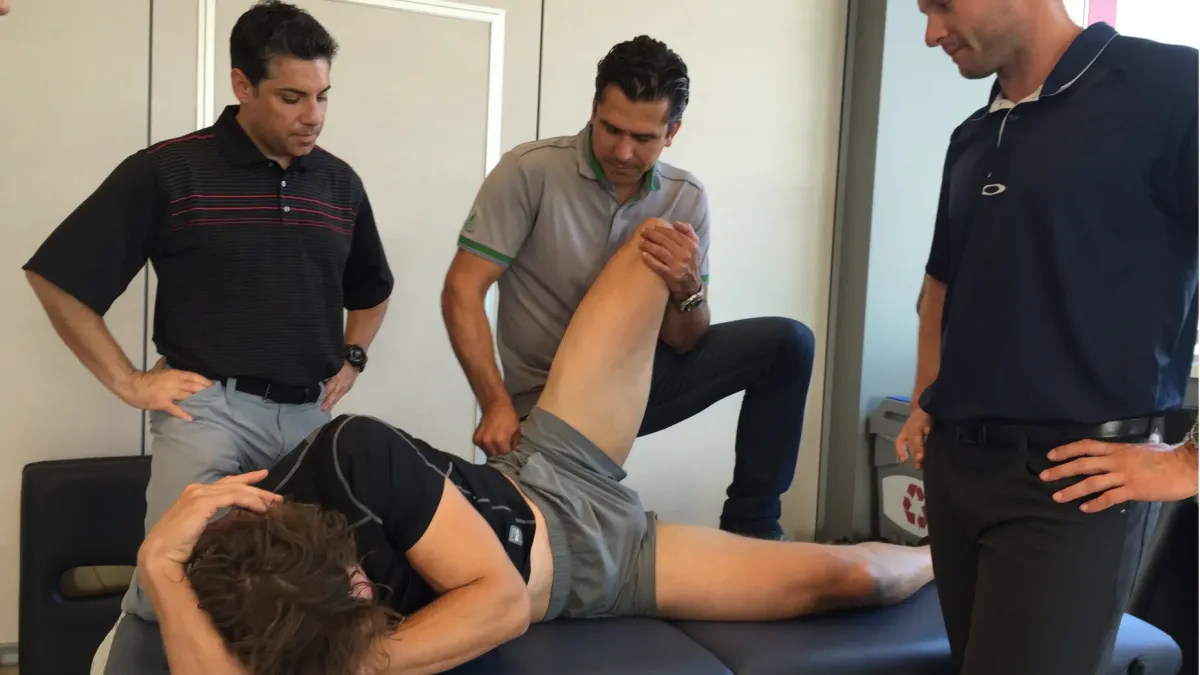
Hip Rotation Deficits and Core Injury Risk in Baseball
Clinical Implementation Corner
In current literature, a decrease in hip ROM has been implicated as a common cause for “core” as well as lower back injury in professional baseball players. These aforementioned body regions represent up to 12% of all injuries affecting MLB players. Authors Camp and Spiker et al, conducted a study to analyze the hip rotational profiles to identify “at risk” athletes for core and low back injury.
Let’s dive in...
The authors found that the greatest risk factor for the injuries is an increasing deficit in hip internal rotation BETWEEN hips.
The authors defined the “IR deficit” = Greater IR - lesser IR (between the two hips). As an example, if the the right hip measures 25 degrees of IR and the Left hip measures 15 degrees, the IR deficit is = 10 degrees.
The biggest risk was found when there was an asymmetric difference between each hip internal rotation greater than 5 degrees. This is important due to the fact that the rotational aspect of the hips allows for proper transferring of energy along the kinetic chain.
These findings are similar to those noted previously in which an association between abdominal strains and hip flexion contractures in female professional tennis players was identified. Similarly, decreased hip IR and ER have been implicated as a cause of symptomatic low back pain in professional golfers.
In professional baseball, Li et al determined that decreased IR and TROM (total ROM) were associated with an increased incidence of injuries in the hip, groin, and proximal hamstring.
Interestingly, the hip variables did not correlate with shoulder or elbow injuries in pitchers.
From Dr. Prebeg:
“Although the research does not support this, subjectively players have stated how they are able to perform their tasks better when hip mechanics are addressed. Clinically I have noticed some pitchers shoulder ROM improve when addressing the hip mechanics. Secondly if the power generation is optimized from the lower extremity there should be less stress on the shoulder and elbow. Therefore, let’s look out in years to come for supporting literature.”
In conclusion and taking it to the clinic:
Hip internal rotation deficit of 5 degrees or greater between hips correlated with core and low back injury for pitchers and position players.
Therefore, when treating an elite baseball (or golfer, hockey player or any athlete) player make sure that IR for both hips are as equal as possible.
In general public I will treat primarily the hip mechanics for any low back associated disorders.
Camp, C. L., Spiker, A. M., Zajac, J. M., Pearson, D., Sinatro, A. M., Dines, J. S., . . . Coleman, S. H. (2018). Decreased Hip Internal Rotation Increases the Risk of Back and Abdominal Muscle Injuries in Professional Baseball Players. Journal of the American Academy of Orthopaedic Surgeons, 1. doi:10.5435/jaaos-d-17-00223


